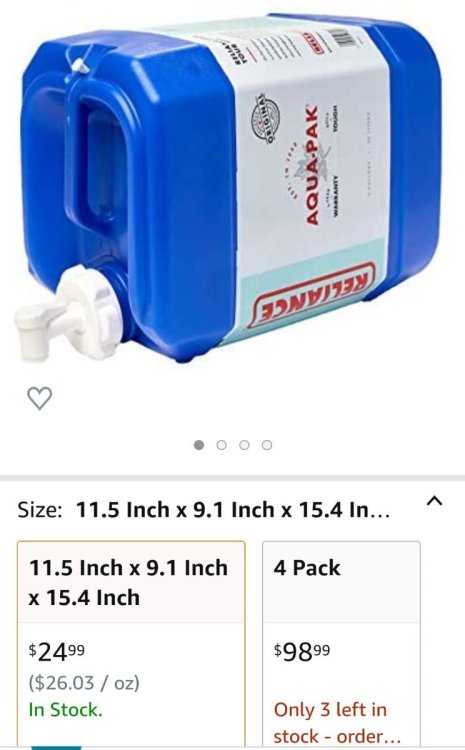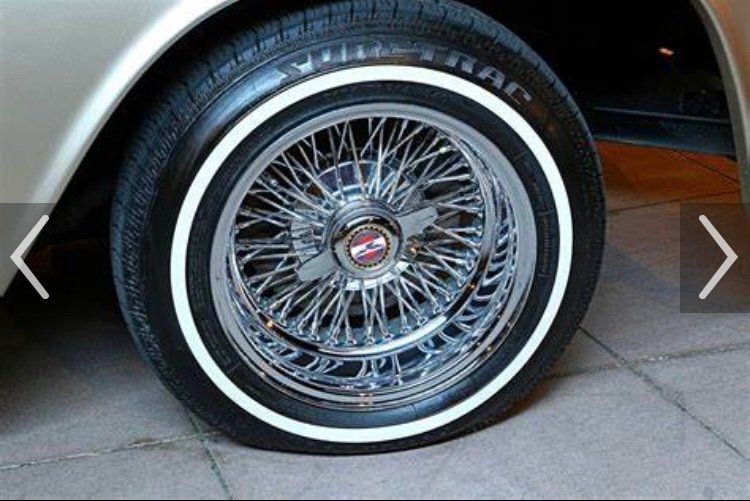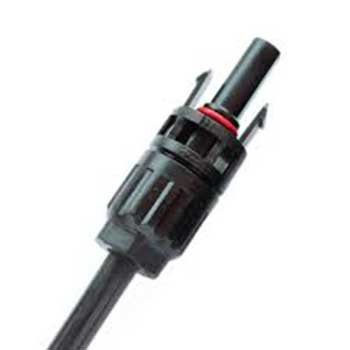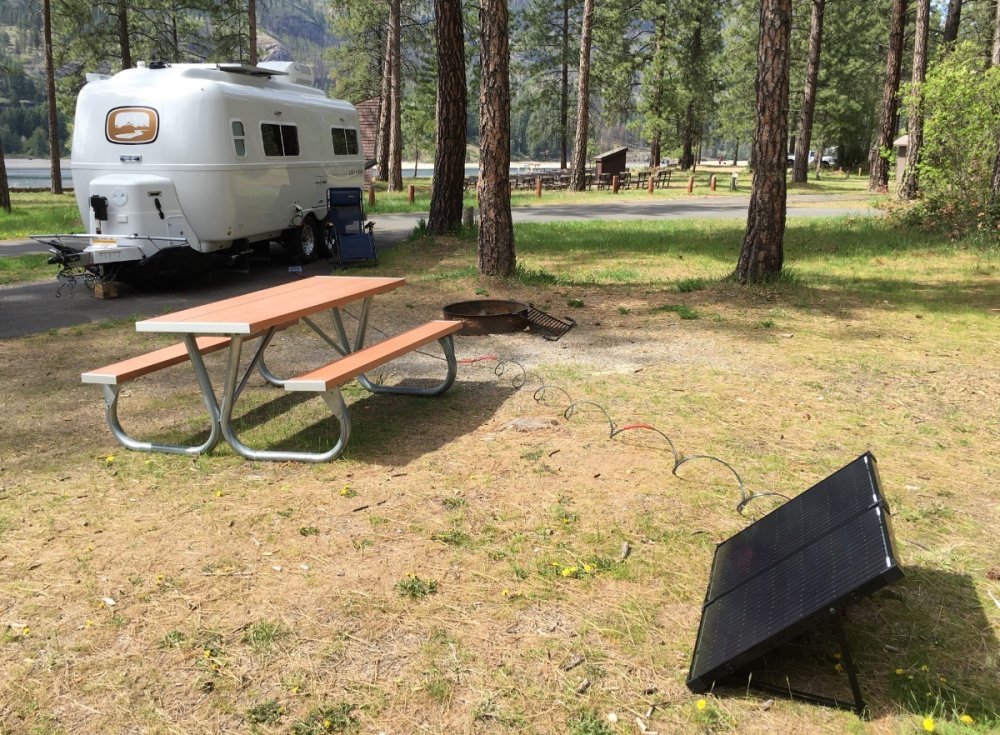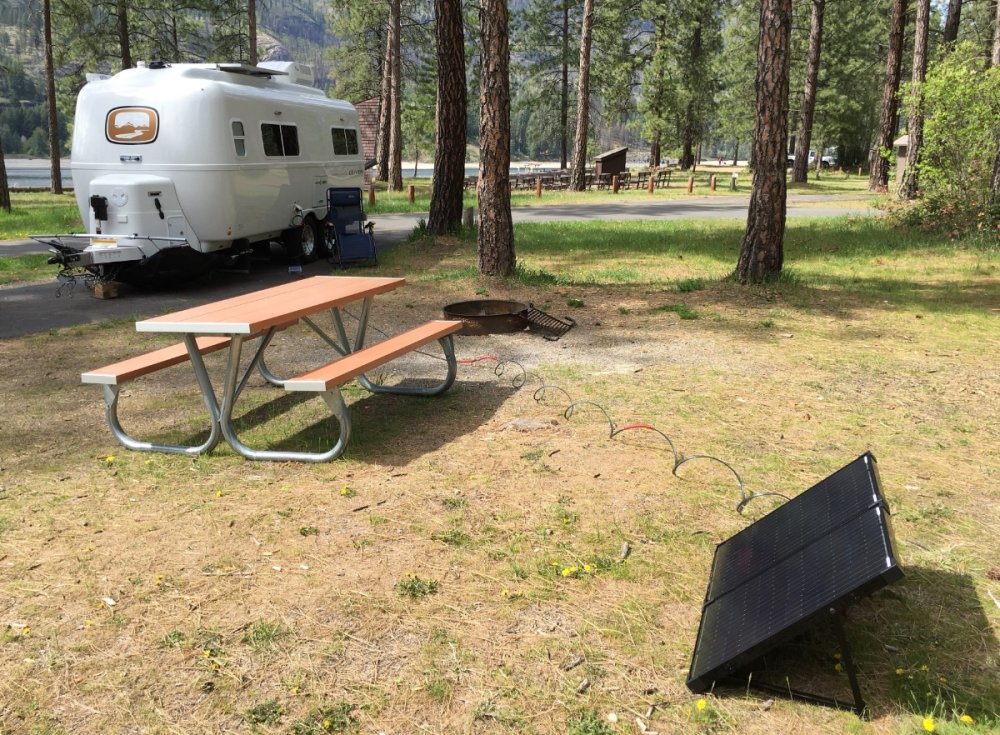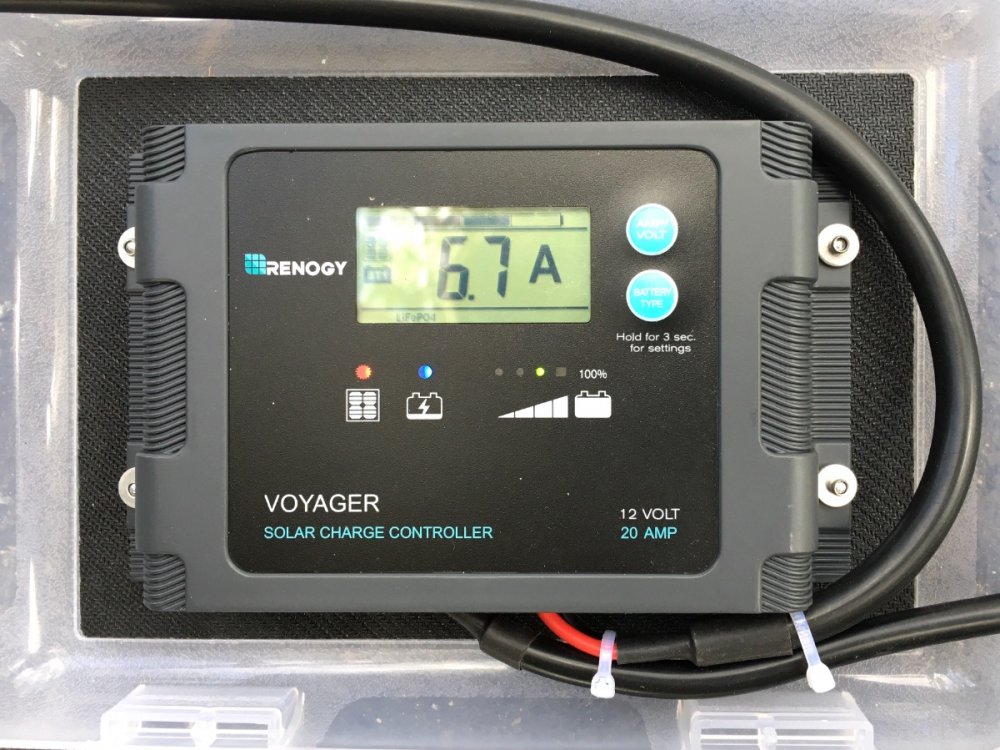Leaderboard
Popular Content
Showing content with the highest reputation on 01/13/2022 in all areas
-
My 2008 Tacoma, with a 4.0L V6 engine had a towing capacity of 6500 Lbs and it pulled The Wonder Egg (Elite), which weighed in at 3900 Lbs fully loaded, 110,000 miles, crossing the Rocky Mts about 6 times. It could maintain its speed uphill, although the engine would be at very high RPMs, under redline, but still it was pretty high. I usually settled for a (slight) speed reduction to be nice to the engine. It was a Prerunner version and I swapped out its rear-end for an Eaton Industries limited slip differential, which helped when going up steep dirt roads. When it achieved 150,000 miles I searched for my next tow vehicle. The engines in the newer Tacomas were 3.5L V6 or a 2.7L 4 cylinder options. Even though the torque specs looked good, I was not as comfortable working a 3.5L engine as I did the 4.0L one, so my search expanded to the F150 and I went for the 5.0L V8 engine with a SuperCab and a 6 ft bed. I got more grunt and cargo space. I still have the Taco, now with 260,000 miles. It runs like a Swiss watch and has been "retired" to local Texas, non-towing duties. I expect to achieve 450,000 miles with it.4 points
-
I realize the OP is talking about her AGM FLA batteries. But, for anyone that might not realize the difference, the resting voltage of a fully charged LiFePO4 battery is 13.6V4 points
-
Easy fix, I'd say 10 minutes tops to loosen the plug housing and cut and pull the wires forward to take up the slack in the wiring harness cover. J B weld is not for rubber repairs. trainman3 points
-
2 points
-
MC4 connectors are typically used to interconnect PV panels and an unregulated charge controller input. The ZAMP proprietary SAE connects directly to the battery bank. If it were "converted" to MC4, it would be possible to connect the PV array directly to the batteries without a controller. The unregulated higher voltage of the array would "fry" the batteries.2 points
-
Time of day? Angle of the sun? Do you think your zamp reading of 13.1 could be some errant solar actually charging the panels? The 4th dot flashing would also indicate "charging" to me, but I'm not a Zamp owner. Someone else who is could be more help here. It is curious. Resting voltage of a fully charged agm 12 v battery isn't 13.1, in my experience. Maybe 12.7 or 12.8, maybe a bit higher, depending on the battery. 13.1 would seem to be a charging voltage, from some source. Resting voltage is a battery sitting without charge, or load, for several hours.2 points
-
@SeaDawg, @mossemi, the plot thickens. I went back today (again during non charging hours) and found the Zamp reading 13.1. I went to the power source and turned on the power, and the EMS was reading E0, 60H, 1A, and 122v. Zamp showed 3 out of four bars solid with the fourth flashing. I left the power on and will go back in the morning to see where we are. This is why electrical stuff confounds me!2 points
-
We have several 5 gallon tanks, like these below, for drinking water. We've worn out a couple spouts over the years, but the tanks are fine. Empty, they stack 3 high on our garage, and full, they pack nicely in the truck bed because of the shape. Five gallons is about all I can lift. When we're set up for several days, we just put a container on the trailer tongue or a step stool, on its side, and use the spigot. A number of people use the scepter tanks. Really nice, and super durable. More expensive. We also have a 40+ gallon bladder, like this one below. Folded up empty, it fits in one of our underbed bins. We don't use it much, but it's light, and good to have around for emergency refills. We carry it full in the pickup bed.2 points
-
Ours has looked like that for a while. I keep meaning to fix it…..1 point
-
Has anyone here converted the side export for portable solar panels from an SAE to an MC4. We have a portable power station that uses MC4 and would rather just have one plug type. Since there is some confusion with the SAE plugs and some questions concerning their reliability, we are looking at the possibility of changing that side port to MC4. Thanks, Kirk1 point
-
@SeaDawg, yes, 13.1 along with the flashing dash indicates charging, and yes, I do think our solar panels were capturing *some sunlight. The trailer is under a cover but exposed on the west side, so when the sun gets past that point, *some light gets to them. That's been our experience all along, that this solar system starts charging with the slightest hint of daylight. It is still a mystery to me why the voltage into the system a few days prior was so low, but I do hope that when I go back the batteries are all the way back to full charge.1 point
-
1 point
-
Many power stations have an internal integrated controller, so your panel may not/probably doesn't have a controller. You'd need to add one, to safely use it with the Ollie, as the solar port does not run through the on-board controller for the fixed panels. The port connects through just a fused line, going straight to the batteries. X2 @bhncb1 point
-
I'm kind of confused. I don't think I've ever seen a portable panel with an mc4 male or female end to plug onto a port. Mc4 connectors aren't easy to separate, in my experience, and are not made for quick connect like some other types. We have a special little plastic tool to disconnect our fixed panel mc4 connectors, which are semi "permanent " connections. Many suitcase solar come with alligator clips. Zamp uses sae, wired reverse of standard. Some brands come with a few varieties of connectors. I've not seen quick connect mc4 in portable solar, but maybe there's something new out there. Edit to add: I looked around, and found these quick connect mc4 connector pairs from a Canadian company. Is this what yours look like? http://azimuthsolarproducts.com/product/mc4-connectors/1 point
-
I haven't yet, but would be interested in replies. We have a 200W Renogy suitcase + controller with converting/polarity reversing adapters (I haven't determined yet whether I need the polarity adapter). It would be nice not to have to use those and just plug straight into an MC4 outlet.1 point
-
1 point
-
Yep - I cut an old drinking water hose to about three feet. The relatively large opening at the top is great for those Forest Service camp grounds that have the hand pumps with a spigot that tends to spray water. Mine are about 9 years old and still have a bunch of life in them. As you might remember, I primarily use them while fly fishing out West for two months each summer. As with most of my things I do not abuse them and they ride in the bed of my F-150 most of the time - note that they do fit beneath my tonneau cover (barely). The small plastic wheels can be "interesting" when pulling a full container over road rocks (1/2 to 3/4 inch trap rock for instance). But, this still beats the heck out of trying to carry that much weight. If the road/path is too bad, I simply leave them in the back of the truck and drive to the water source. While the handles are made of plastic they have never been an issue. The large "caps" at the tops of the containers can leak when the containers are stored on their sides if not tightened down properly or if the washers inside have worn. Bill1 point
-
"I carry two 8 gallon containers like THIS for extra water." How long is the hose that you need to transfer the water via the port? Two to three feet long? I think the shortest hose that I have seen is six feet long. Maybe you just cut the hose to the length you need.1 point
-
While there are/is circumstances in which an external water pump could come in handy - pumping water from a bladder in the back of the tow vehicle for instance - for the most part you can simply use the Oliver on-board water pump via the "winterization port" to pump water into the Oliver. As far as bladders or other water containers are concerned - I carry two 8 gallon containers like THIS for extra water. The wheels on these containers are VERY handy in that if you have to carry the water very far it becomes heavy (just over 8 pounds per gallon). Bill1 point
-
We carry a 5 gallon portable plastic 5 gallon tank. It is not collapsible. I had this tank long before we got the Ollie. I would look at collapsible tanks. There is a boondocking port on the back of the trailer and it uses the pump already in the trailer to suck water in from the container. You just have to position the water flow knobs in the boondocking configuration described in the manual or under the curbside bunk. It works well.1 point
-
No need for a portable pump to fill the Ollie water tank. They can draw water from containers directly into the fresh water tank. One of my favorite features.1 point
-
1 point
-
@Liana, as @mossemi said, if you were getting 112 mi-day, and a bunch of other people are charging or using power otherwise, at dusk, your ems, and/or your pd charge wizard will shut down if voltage received is too low, as i mentioned earlier. Do talk to the management. You may not have been charging much, if at all. Have you visited the storage site again, to see what your readings are, after sunset? Frankly, I'd cut off the solar, remove the batteries, take them in to an auto parts shop, and get them load tested. See if it's worth trying to bring them back. If autozone or Napa says it's worth a try, take them home, put them on slow chargers, and see what you get after a few days. Even really dead batteries will display over 13, when charging. But, they'll very quickly drop down to 12.0 or 12.2 when the charger is disconnected, and any small load is applied. I'm sorry this has happened. It may be possible to revive flattened batteries, or it may not. Depends on how long they've been flat, and how many times they've cycled. At least you got 3 or 4 years. Whether you jump down the lithium rabbit hole, or replace with agms, is really up to you. But, I'd really want to find out why the batteries weren't charging, in the first place before I replaced them, and fix that situation first. No point in throwing good money after bad, as my mom would say .1 point
-
John's Sooo correct here. I guess the theme I'm try to communicate is find the "system" that allows you to add components to as you build. Example: when you add the Victron MultiPlus inverter/generator to the system, it eliminates problems before they happen by controlling multiple energy sources. Additionally, stored (battery) energy can supplement other sources - like shore power or generator power when needed - the amount is up to the user. I chose 8.5 amps as the limit from my stored energy when plugged into a regular outlet in my RV garage - the surge needed to run the RV AC. I also found the Victron apps got me well acquainted with the when, how and where as energy flowed in my previous RV.1 point
-
With all the gear out there today, there are literally thousands of ways to skin this cat. We use one or two really cheap, but somewhat bulky coleman 100 watt panels for "portable " solar. Each only weighs about 18 pounds, but they're pretty big. Not easy to haul, and store. I have a friend who made a collapsible pvc frame for an inexpensive thin and lightweight 100 watt flexible panel, and she's happy with that. She stores it under the cushions when she travels. Controller in the cupboards. We rarely deploy "portable " unless we'll be in a spot for a long time, and camped in the shade . Weight is a consideration, as is theft, for me. If someone steals my 5 year old, 100 dollar panel, well, they need it far more than I do. We have a furrion port, because I like the cover better. In the past, we had to use a cnlinko soldered tricky connector, because furrion didn't sell a connector without one of their overpriced panels. Today, you can buy a zamp or mc4 to furrion adaptor. Zamp sells one on their website . You can also buy an adaptor to reverse the zamp reversed polarity. Zamp claims its safer than standard sae (probably true, less likelihood of shocking yourself if you are careless enough to put your hand on the male connector), but it's really probably just one of their proprietary kind of tools. Is what it is . I'm always in the "don't get carried away" chorus. Use what you already have, and, if you actually find that you need more, then, buy more . As in, a cheap and simple panel, with good alligator clips, and a $20 pwm controller, might or might not be all you need. Or, you may need the whole enchilada. I don't know. We boondocked for over ten years with 2 agm 105 ah batteries, and 200 watts of fixed solar and a Honda 1000 watt generator, rarely used, til we installed a compressor fridge. The extra draw (60 to 70 ah a day) of the fridge definitely changed things up .1 point
-
Forgot this, your BVM-712 will show charging amps from the portable panel, as long as the wires are connected to the positive and negative buses, not right to the batteries, but you won’t be able to see actual details, just for that device, except by looking at the Zamp control display. You COULD easily replace the Zamp control with a Victron MPPT one, as CnC suggests above, and that way it will network with your monitor, so you can use the Victron Connect app to see all those cool functions of your portable panel, just like the ones on the roof. This one is in my WishList, I just haven’t got to that project yet😬 Victron Energy SmartSolar MPPT 100V 20 amp 12/24/48-Volt Solar Charge Controller (Bluetooth) FYI, https://olivertraveltrailers.com/forums/topic/5329-how-to-victron-mppt-solar-charge-controller-underneath-the-street-side-bed/ If you decide to buy the Victron unit, then order a solar panel without the onboard unit, that will save some money right there. BUT you won’t be able to use the panel as a stand-alone charger, for example, to charge the battery in your truck when you are away from the Ollie. That is why I modified my Zamp with Anderson connectors, so I could use it both ways. John Davies Spokane WA1 point
-
It sounds like you want to go first class on your upgrades. Before settling on your current intentions, you might explore the expanded benefits of a Victron solar controller and a Victron Multiplus 2k inverter/charger. After having upgrading to these items in an Airstream, I find I miss their capabilities in our Ollie. I know that I'll be changing our 2020 Ollie setup in the near future. I hate to spoil your plans, but I'd hate it more if I didn't point you toward the alternate options that I'll be making (again.) BTW, I think the Ollie is Sooo much better than comparable Airstreams!1 point
-
i recommend this basic heat-only thermostat, it works well, has a very small dead band (temperature swing) and looks very nice. My Ollie came with an Air Command AC and that isn’t compatible with the fancy stat, so Oliver installed a clunky mercury switch type one, that failed after three years. This one has been working great since then. I don’t care about programmable features, the first one up in the morning gets to raise the temperature. Emerson 1E78-140 Non-Programmable Heat Only Thermostat for Single-Stage Systems 1: Zamp SAE style connecters are junk IMHO, they are not waterproof, so you can get corrosion problems, and they use an oddball reverse polarity design. This is basically the same type as the (horrible) flat 4 pin trailer connectors that fail so often. I would replace any Zamp ones with standard solar PV connectors like this or else with Anderson Power Poles. That is what I did to my 100 watt Zamp suitcase panel. ….. https://olivertraveltrailers.com/forums/topic/5478-how-to-remote-mount-the-controller-of-a-suitcase-solar-panel-not-inside-the-trailer/ I like my 100 watt panel, that 140 watt one will be good too, but these are quite heavy and bulky. Make sure you have a place to store it, preferably in its case on end, not flat. Zamp has newer panels that are way lighter and less bulky, but they are super expensive. I have a Furion port, and it works fine but is a PITA to install on a cable, it has to be soldered and that is quite difficult with 10 AWG wires! And it is limited to 10 amps. If I had to do it again I would probably install this port: All of these PowerPole parts are very high quality and reliable, don’t require soldering, carry a high current and are self cleaning as you plug them together. This is the system that ham radio operators love. They are NOT waterproof, if you camp ofter in a rainy climate, they would not be as good a choice IMHO. (But in rainy weather you will probably just store the panel away, as I do.) 2: solar port location is best as close to the batteries as possible, but ChrisMI’s suggestion is a good one too, especially if you are already swapping out the panel connectors. If you plan to add a DC to DC charger at the truck, then go WAY big on cable size, like 00. That way you can run a big charger, 30 + amps. 3 - hook the port cables directly to your battery positive and negative buses, with a 10 amp inline fuse or resettable circuit breaker in the positive wire. Use 10AWG or bigger wire, even if the port is close by. The solar charger doesn’t have to “interact” with any of the other systems, that happens automatically anyway, based on battery voltage. I hope this helps. John Davies Spokane WA1 point
-
I’d personally run a 4 gauge wire bundle out the front with an Anderson connector. This could be used to attach a dc to dc charger for charging from your alternator, an external solar panel (with its own controller), or an an external 12 volt power source for possibly a powered cooler in a truck bed.1 point
-
I just want to mention that earlier this year in April I spent ten days in Colorado and Utah with the Oliver with out shore power. The Oliver had 340 watts on the roof and Zamp 30 amp charge controller. The only up grade was four 100 ah Battle Born batteries and Victron battery monitor. We used the furnace every night, inverter for coffee maker every morning and microwave a few times to thaw food. Plus lights, water pump, fan, music. I brought alone a generator but never needed it. We always had batteries top off with the morning sun. This was a big improvement over my previous experience with the AGM batteries. At this point I am happy that I kept my 2000 watt Inverter, it handles everything just fine including the new Houghton AC with out any of the new inverter charger issues. I recently up graded my roof mounted solar only because I live in MN and can not expect to harvest as much energy as Colorado or Utah. I do think simpler is better, like the Battle Born batteries are easy to use when coupled with Victron battery monitor and a cut off switch, which make it easy to care for off season. So eventually they will work the kinks out but simpler is better.1 point
-
I am camped at Kettle Falls (Lake Roosevelt COE) campground and the solar exposure is not great in the afternoon due to trees, so I set up the Renogy panel in a bright spot using 40 feet of cable. No worries, I am seeing a steady 6.5 to 6.8 amps, and the big rooftop ones are only putting out half that, and it is highly variable. Yay, I am pleased. Highly recommended mod! John Davies Spokane WA1 point
-
1 point
-
1 point
-
Recent Achievements






